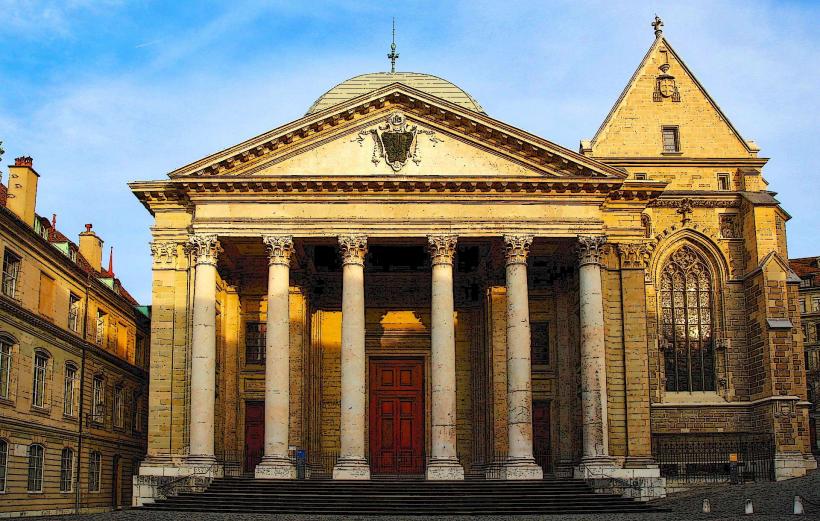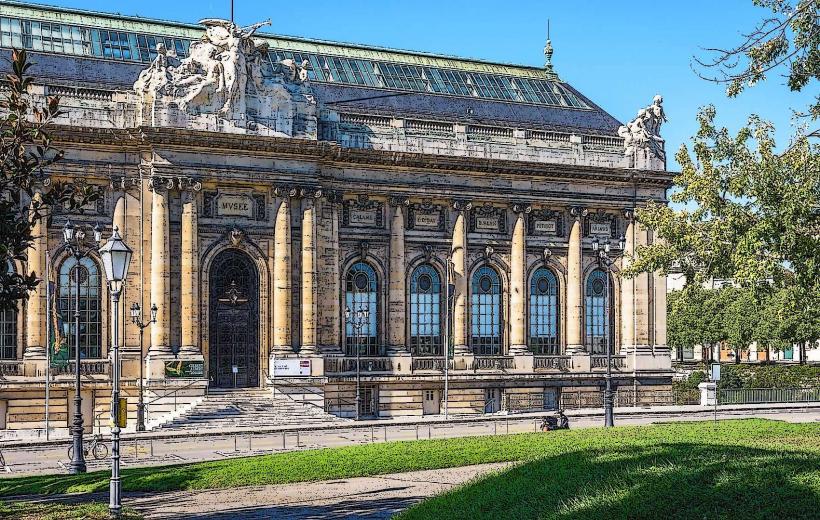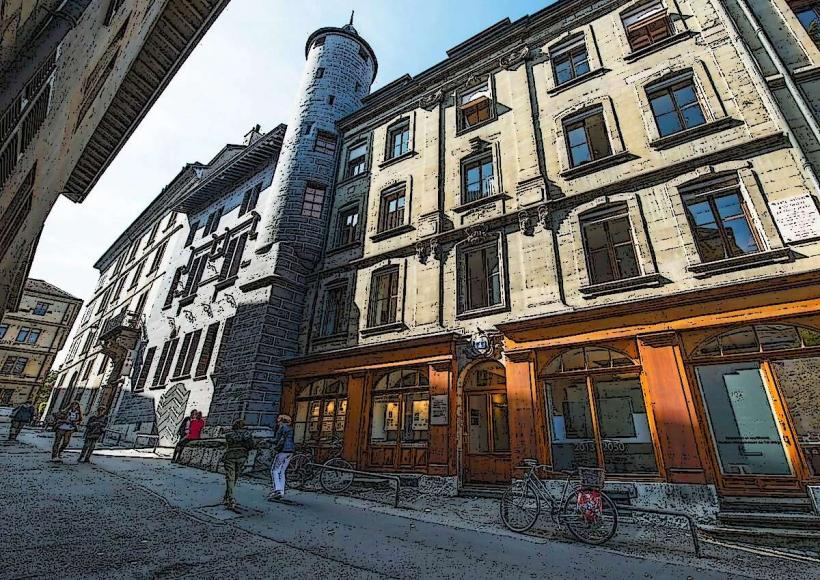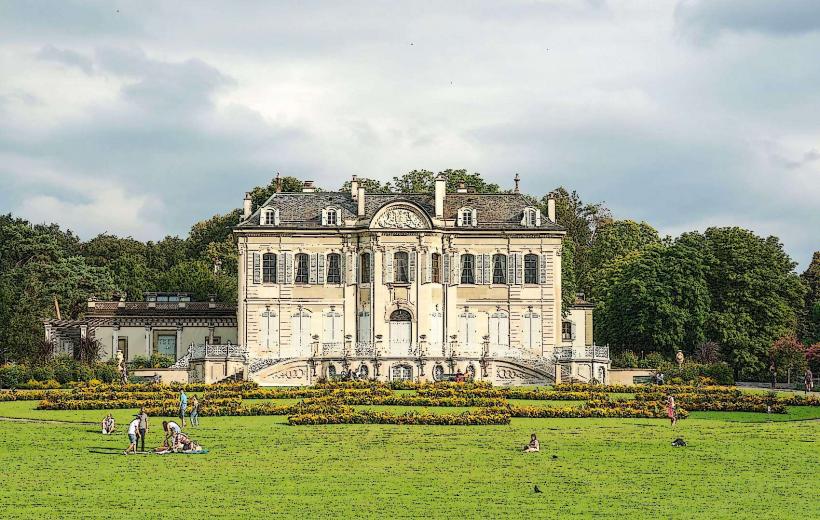Information
Landmark: Patek Philippe MuseumCity: Geneva
Country: Switzerland
Continent: Europe
The Patek Philippe Museum (Musée Patek Philippe) is a prestigious museum located in Geneva, Switzerland, dedicated to the history of watchmaking. It is one of the world’s most renowned institutions for horology (the study and art of timekeeping) and showcases some of the finest timepieces ever created, with a particular focus on the famous Swiss luxury watch brand Patek Philippe. The museum combines both historical collections and more contemporary pieces, providing a comprehensive look into the evolution of timepieces and the artistry behind Swiss watchmaking.
1. Overview
- Location: The museum is located at Rue des Vieux-Grenadiers 7 in the Plainpalais district of Geneva. It occupies a modern building designed to complement its prestigious collections and is easily accessible for visitors.
- Founder: The museum was founded in 2001 by Philippe Stern, the former president of Patek Philippe, and his family, to house the growing collection of the company and to showcase the history of watchmaking.
- Mission: The museum's mission is to preserve and exhibit the history of watchmaking, particularly focusing on the artistry, precision, and innovation of Patek Philippe timepieces. It also educates visitors about the role of Swiss watchmaking in shaping global horology.
2. Collections
The museum’s collection is divided into several sections that span different time periods, offering an extensive and immersive experience for horology enthusiasts.
a. Patek Philippe Collection
- Patek Philippe Watches: The museum houses an exceptional collection of Patek Philippe watches, which includes historic pocket watches, wristwatches, and complicated timepieces (e.g., watches with intricate features like perpetual calendars, moon phases, and minute repeaters).
- Unique Pieces: Some of the most notable watches in the collection are one-of-a-kind masterpieces commissioned by royalty, aristocrats, and wealthy collectors. These include historically significant timepieces, such as Patek Philippe’s Grand Complications and minute repeaters—watches known for their highly intricate mechanisms.
- Innovations: The collection also highlights Patek Philippe’s groundbreaking watchmaking innovations, such as its advancements in movement design, complications, and mechanical precision.
b. Horological Heritage
- Antique Timepieces: The museum’s collection includes antique watches dating back to the 16th century. It showcases watches from pioneering Swiss and European watchmakers, as well as pocket watches, clocks, and instruments that predate modern horology.
- Notable Artifacts: The museum features timepieces and clocks crafted by some of the most famous watchmakers in history, such as Abraham-Louis Breguet, Thomas Tompion, John Arnold, and Antoine LeCoultre. Many of these objects are extremely rare and valuable.
- Watches and Clocks from Asia: The museum also displays timepieces from Asia, especially from China and Japan, showing the cultural cross-pollination and influence on European watchmaking during the 18th and 19th centuries.
c. Miniature Paintings and Timepieces
- A special section of the museum showcases miniature paintings created on the faces of watches and pocket watches. These painted dials are often elaborate and depict scenes from nature, portraits, and historical events. The museum preserves many of these works of art, which are intricately detailed and historically significant.
d. Enamel Clocks and Other Timepieces
- The museum is known for its collection of enameled clocks, many of which were created by Swiss artisans in the 18th and 19th centuries. The clocks feature intricate designs, often with rich colors and detailed enamel work.
3. Key Highlights
- The Caliber 89: One of the museum’s most famous pieces is the Patek Philippe Caliber 89, a watch made in 1989 to celebrate the company’s 150th anniversary. This extraordinary timepiece is one of the most complicated pocket watches ever made, featuring 33 complications, including a perpetual calendar, a minute repeater, and a star chart.
- World’s Most Expensive Watch: The museum also holds pieces from Patek Philippe’s collection that have been sold at record prices at auctions, including watches that have held the title of being the most expensive watch in the world at the time of their sale.
4. Architectural Design
- The museum building is modern yet incorporates design elements that evoke the heritage of Swiss craftsmanship and luxury. The interior features a sleek, minimalist design, with ample space for showcasing timepieces, alongside a careful selection of display cabinets that ensure each piece is well-lit and carefully curated for visitors to appreciate the fine details.
- The museum also offers a dedicated library and educational spaces, where visitors can learn more about the history of horology, the craftsmanship involved in making timepieces, and the evolution of Patek Philippe as a brand.
5. Educational and Cultural Programs
- The Patek Philippe Museum not only serves as an exhibition space but also as a learning institution for anyone interested in the history and craft of watchmaking. The museum offers guided tours, where visitors can gain in-depth knowledge of the exhibits, including the complex mechanisms of the watches on display.
- Additionally, the museum hosts various temporary exhibitions focusing on different aspects of horology or the history of watchmaking, allowing visitors to explore the subject in greater depth.
6. Visitor Experience
- Opening Hours: The museum is generally open to the public throughout the week, with scheduled hours that can vary depending on the season. It is recommended to check the website for up-to-date opening times.
- Admission: The museum charges an entrance fee, which contributes to the upkeep of the museum and its exhibitions. Discounts may be available for students, seniors, or groups.
- Shop: The museum has a shop that offers a selection of books, watches, and other horological memorabilia for enthusiasts and collectors.
7. Conclusion
The Patek Philippe Museum is a must-visit for watchmaking aficionados, collectors, and anyone interested in the intersection of art, history, and craftsmanship. Its exceptional collection of timepieces, ranging from antique watches to modern masterpieces, offers a fascinating insight into the evolution of horology. As a testament to the legacy of Patek Philippe, one of the most respected names in luxury watchmaking, the museum continues to preserve the rich history and artistry behind one of Switzerland’s most iconic industries. Whether you're a collector, a historian, or simply a fan of fine craftsmanship, the Patek Philippe Museum provides a remarkable experience in the world of timekeeping.















